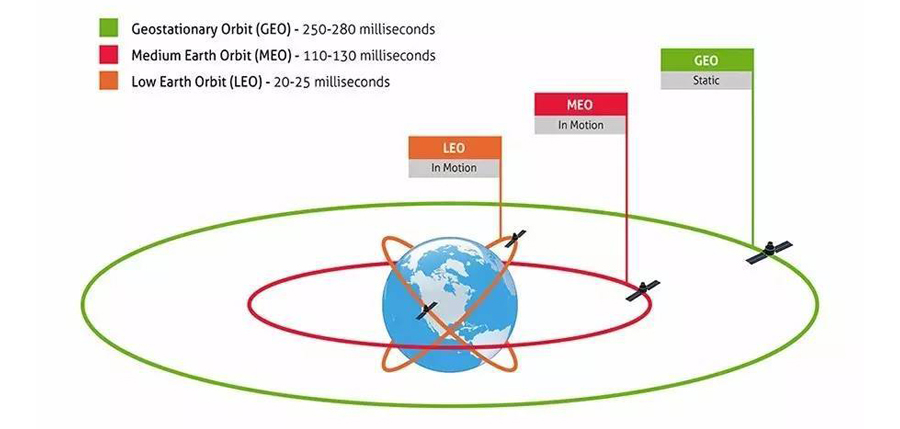
It is quite common to talk about LEO, GEO and MEO satellites, especially among professionals in the satellite communication industry. In recent years, an increasing number of satellites have been launched and various satellite constellations have been built to support satellite communication with better global coverage than ever before. This article mainly talks about two extreme type, LEO and GEO to help the public to understand better about their key differences.
LEO and GEO Satellites
The full name of LEO and GEO is Low Earth Orbit and Geostationary Earth Orbit respectively. As the name suggests, LEO satellites works on low orbits ranging from 500 to 2000 km altitude. And the orbit altitude of GEO satellite is much higher, which is around 36000 km. The different travelling orbit altitudes make their orbit time different. While LEO satellite orbit time is 2 to 4 hours, GEO satellites travel at the same speed with the Earth, and its orbit time is 24 hours. Therefore, in the earth view, GEO satellites park in the sky. They keep pointing at the same geographic area whereas LEO satellites travel to different geographic areas.
Antenna Requirement
According to the orbit altitude and orbit time differences of LEO and GEO satellites, one significant advantage for GEO satellites is that the ground stations do not need to adjust their angles to receive the signals from satellites. However, as the orbit of GEO satellite is much higher than LEO satellite, GEO antennas are required to have larger size to provide higher gains than LEO satellites. As LEO satellites fly across the coverage area, the antennas need to work on multiple satellites so that when one satellite fly away, the one behind is able to take over the communication. Furthermore, in order to provide consistent service, at least two or three antennas on the ground are required for change-over and tracking.
DITEL Antennas
With the development of different types of satellites, satellite communication has become available for most areas over the world. DITEL antennas, including TVRO and VSAT, have been installed in many different countries and provide satisfying performance. With the 3-axis stabilized platform, DITEL models are able to track the satellites automatically and suit for various vessel types in various areas. Moreover, DITEL antennas also support multiple satellite connection, which keep you consistently connected through your whole voyage. Contact us at info@di-tel.com for more details and we would make professional recommendations for you!
References
[2]“LEO vs. MEO vs. GEO Satellites: What's the Difference?”, Symmetry Electronics, 2018,
[3]“Geostationary satellites: Definition, Application, Limitations”, unacademy,
[4]“Satellites 101: LEO vs. GEO”, iridium, September 11, 2018
*SEND INQUIRY
